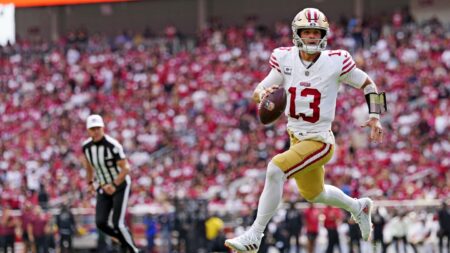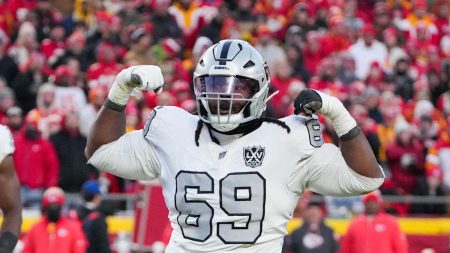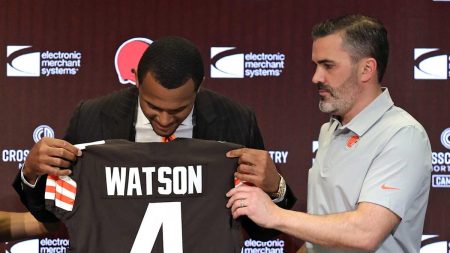The Bengals’ Talent and the Salary Cap Conundrum
The Cincinnati Bengals have an array of talented players, but the challenge lies in retaining them. Quarterback Joe Burrow, who recently secured a lucrative deal, is confident that the team has the cap space to sign their best players to new contracts. These players include receivers Ja’Marr Chase and Tee Higgins, defensive end Trey Hendrickson, and tight end Mike Gesicki. Burrow, known for his leadership and on-field prowess, expressed his desire to keep the team together: "We all want to stay together. When you have guys that are motivated like that, I think you can get those things done.”
Burrow’s Willingness to Restructure
Burrow’s commitment to the team extends beyond his words. During an interview with the Pardon My Take podcast, he discussed potential ways to restructure his contract to free up cap space. He explained that converting some of his salary into a signing bonus or pushing money to the back end of the contract can lower his cap hit. This approach would allow the team to sign other key players without immediate financial strain. Burrow’s willingness to restructure, even during his prime, is a rare gesture that puts significant pressure on the team to reciprocate.
The Financial Mechanics
Burrow’s current contract includes a $25.25 million base salary and a $10 million option bonus due in 2025, resulting in a cap hit of $46.25 million. By converting $24.08 million of his base salary to a bonus and prorating it over five years, he could clear $19.264 million in cap space. This would increase the Bengals’ projected cap space for 2025 from $49.467 million to $68.731 million. This maneuver not only helps the team financially but also demonstrates Burrow’s commitment to the team’s success.
The Cash Distribution Dilemma
While the cap space can be managed through creative financial maneuvers, the real issue in Cincinnati is the willingness to spend. Team owner Mike Brown’s past statement, "You can’t just pay people willy nilly," highlights the team’s financial conservatism. The Bengals paid Burrow because they had no choice, but with other players, they might opt for cheaper alternatives. The team has a history of letting high-priced veterans walk to make room for draft picks, as seen with safety Jessie Bates III and running back Joe Mixon.
The Cost of Keeping Key Players
Keeping Higgins, who would earn $26.16 million in 2025 if tagged for a second time, and satisfying Chase’s desire for a $40 million per year contract, is a significant financial commitment. The Bengals must decide whether to invest heavily in their current roster or reload with cheaper, draft-eligible players. This decision will have long-term implications for the team’s competitive edge and locker room morale. Burrow, entering his sixth year, is challenging the front office to prove that winning is their top priority.
The Shadow of Carson Palmer
If the Bengals choose to pinch pennies, the clock could start ticking on Burrow’s patience. Carson Palmer, who left the Bengals in 2011, provides a cautionary tale. Palmer, after eight years in Cincinnati, concluded that financial considerations outweighed the desire to win. He said, "If the most important thing is the financials and the second-most important thing is winning, then you don’t have a chance." Burrow is essentially asking the front office to demonstrate that things have changed. If they fail to do so, Burrow might find himself in a similar position, questioning whether he can achieve his goals with the Bengals.
In conclusion, the Bengals have the talent and the cap space to retain their best players. The real question is whether they are willing to spend the necessary money to keep the team together and compete at the highest level. Burrow’s commitment and willingness to restructure his contract send a clear message: the players are ready to stay, but the front office must step up and meet their financial obligations.











